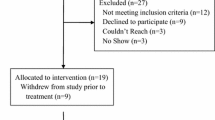Abstract
Intravenous lipid constituents have different effects on various biological processes. Some of these effects are protective, while others are potentially adverse. Phytosterols, in particular, seem to be implicated with parenteral nutrition-associated cholestasis. The aim of this study is to determine the amount of plant and animal sterols present in lipid formulations derived from different oil sources. To this end, animal (cholesterol) and plant (β-sitosterol, campesterol, and stigmasterol) sterols in seven different commercially available intravenous lipid emulsions (ILEs) were quantified by capillary gas chromatography after performing a lipid extraction procedure. The two major constituents of the lipid emulsions were cholesterol (range 14–57% of total lipids) and β-sitosterol (range 24–55%), followed by campesterol (range 8–18%) and stigmasterol (range 5–16%). The fish oil-derived formulation was an exception, as it contained only cholesterol. The mean values of the different sterols were statistically different across ILEs (P = 0.0000). A large percentage of pairwise comparisons were also statistically significant (P = 0.000), most notably for cholesterol and stigmasterol (14 out of 21 for both), followed by campesterol (12 out 21) and β-sitosterol (11 out 21). In conclusion, most ILEs combined significant amounts of phytosterols and cholesterol. However, their phytosterols:cholesterol ratios were reversed compared to the normal human diet.


Similar content being viewed by others
Abbreviations
- ILEs:
-
Intravenous lipid emulsions
- TPN:
-
Total parenteral nutrition
- PNAC:
-
Parenteral nutrition-associated cholestasis
- LCT:
-
Long-chain triglycerides
- MCT:
-
Medium-chain triglycerides
- GC:
-
Gas chromatography
- cGC:
-
Capillary gas chromatography
References
Bindl L, Lütjohann D, Buderus S, Lentze MJ, Bergmann KV (2000) High plasma levels of phytosterols in patients on parenteral nutrition: a marker of liver dysfunction. J Pediatr Gastr Nutr 31:313–316
Llop JM, Virgili N, Moreno-Villares JM et al (2008) Phytosterolemia in parenteral nutrition patients: implications for liver disease development. Nutrition 24:1145–1152
Clayton PT, Bowron A, Mills KA et al (1993) Phytosterolemia in children with parenteral nutrition-associated cholestatic liver disease. Gastroenterology 105:1806–1813
Iyer KR, Clayton P (1998) New insight into mechanisms of parenteral nutrition-associated cholestasis: role of plant sterols. J Pediatr Surg 33:1–6
Lascala GC, Le Coultre C, Roche BG et al (1993) The addition of lipids increases the TPN-associated cholestasis in the rat. Eur J Pediatr Surg 3:224–227
Boselli E, Velazco V, Caboni MF, Lercker G (2001) Pressurized liquid extraction of lipids for the determination of oxysterols in egg-containing food. J Chromatogr 917:239–244
Folch J, Lees M, Sloane-Stanley GH (1957) A simple method for the isolation and purification of total lipids from animal tissues. J Biol Chem 226:497–509
Sander BD, Addis PB, Park SW, Smith DE (1989) Quantification of cholesterol oxidation products in a variety of foods. J Food Protect 52:109–114
Sweeley CC, Bentley R, Makita M, Wells WW (1963) Gas–liquid chromatography of trimethylsilyl derivatives of sugars and related substances. J Am Chem Soc 85:2497–2507
Ellegard L, Sunesson A, Bosaeus I (2005) Higher serum phytosterol levels in short bowel patients on parenteral nutrition support. Clin Nutr 24:415–420
Saubion JL, Hazane C, Jalabert M (1998) The role of sterols in lipid emulsions for parenteral nutrition. Nutrition 14:477–478
Ferrari RA, Esteves W, Mukherjee KD, Schulte E (1997) Alteration of sterol and sterol esters in vegetable oils during industrial refining. J Agric Food Chem 45:4753–4757
Pironi L, Guidetti MC, Zolezzi C, Fasani C, Bersani G et al (2003) Peroxidation potential of lipid emulsions after compounding in All-In-One solutions. Nutrition 19:784–788
Plat J, Brzezinka H, Lütjohann D, Mensink RP, von Bergmann K (2001) Oxidized plant sterols in human serum and lipid infusions as measured by combined gas-liquid chromatography-mass spectrometry. J Lipid Res 42:2030–2038
Carter BA, Taylor OA, Prendergast DR et al (2007) Stigmasterol, a so lipid-derived phytosterol, is an antagonist of the bile acid nuclear receptor FXR. Pediatr Res 62:301–306
Berge KE, von Bergmann K, Lutjohann D et al (2002) Heritability of plasma noncholesterol sterols and relationship to DNA sequence polymorphism in ABCG5 and ABCG8. J Lipid Res 43:486–494
Salen G, Ahrens EH, Grundy SM (1970) Metabolism of β-sitosterol in men. J Clin Invest 49:952–967
Forchielli ML, Richardson D, Gura K, Folkman J, Lo CW (2008) Better living through chemistry, constant monitoring, and prompt interventions: 26 years on home parenteral nutrition without major complications. Nutrition 24:103–107
Alwayn IP, Gura K, Nose V et al (2005) Omega-3 fatty acid supplementation prevents hepatic steatosis in a murine model of nonalcoholic fatty liver disease. Pediatr Res 57:445–452
Gura KM, Lee S, Valim C et al (2008) Safety and efficacy of a fish-oil-based fat emulsion in the treatment of parenteral nutrition-associated liver disease. Pediatrics 121:678–686
Acknowledgments
We are particularly grateful to Dr. Maria Rodriguez Estrada and Mr Stefano Savioli at the Food Science Department directed by Prof. Lerker, University of Bologna, for their expertise and technical assistance offered for accurate laboratory determinations.
Author information
Authors and Affiliations
Corresponding author
About this article
Cite this article
Forchielli, M.L., Bersani, G., Tala, S. et al. The Spectrum of Plant and Animal Sterols in Different Oil-Derived Intravenous Emulsions. Lipids 45, 63–71 (2010). https://doi.org/10.1007/s11745-009-3371-x
Received:
Accepted:
Published:
Issue Date:
DOI: https://doi.org/10.1007/s11745-009-3371-x




